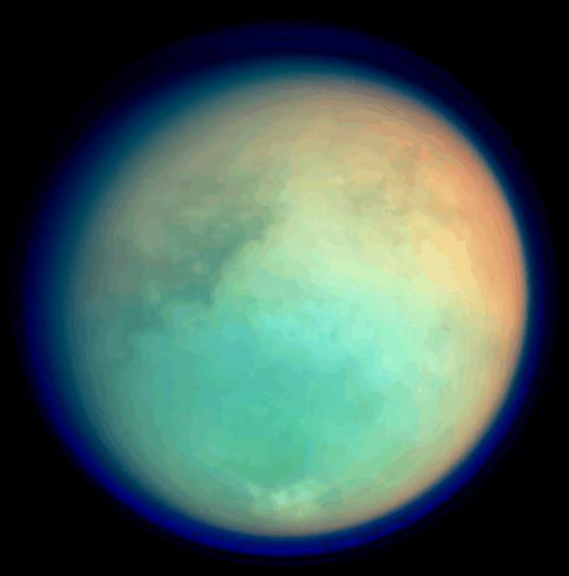
Under the right conditions, life could theoretically evolve without water, claim researchers from Cornell University. Piggybacking off of a key discovery made by the Huygens probe, a team of researchers led by planetary scientist Jonathan Lunine constructed a computer model that demonstrated how prebiotic reactions could occur on the surface of Saturn’s Titan moon amidst an environment too cold to support water.
The findings — published in the Proceedings of the National Academy of Sciences — outline how the presence of a chemical called hydrogen cyanide can serve as a catalyst for the formation of amino acids and nucleic acids, even with the absence of water and sunlight. For a planet to support life, science reasons that it must reside within a specific proximity from a specific type of star and contain water, but recent evidence suggests that chemical reactions alone could spark the building blocks of life, suggesting that life may exist outside of the boundaries of the “habitable zone.”
Unlike the Earth, Titan is cold, oxygen-starved, lacks liquid water on its surface, and is pitted with rivers and oceans of liquid methane. At the same time, the seemingly alien world exhibits an atmospheric pressure and rain cycle similar to Earth’s, albeit out of methane; not too supportive of life as we know it. More importantly, the presence of hydrogen cyanide in its sediment suggests that there may be other factors at play serving as catalysts for life-forming chemical reactions.
Given that previous experiments have found that the hydrogen cyanide molecules often form a polymer known as polyimine, a compound which is an impetus in sparking the prebiotic reactions that lead to life, Lunine and his team sought to create a simulation that emulates the likelihood of such reactions occurring on Titan. What they discovered was that not only are such reactions possible but that the resulting polyimine can sustain prebiotic chemistry in the ultra-cold temperatures felt on Titan.
By absorbing a wide spectrum of light, including the wavelengths that penetrate Titan’s smoggy atmosphere, the polyimine can “soak up” the solar energy needed for chemical reactions to occur. What’s more, the polyimine displayed a flexible backbone, allowing it to adopt several different structures ranging from sheets to coiled shapes. The interaction between shapes could lead to the creation of even more complex structures, such as porous stacks of sheets, which, in turn, support delicate chemical reactions within them and allow molecules to drift in and out.
“We are not saying we created Titan life in a computer, or even structures that might be in life on Titan,” Lunine told Space.com. “We are saying that the early steps toward structures, catalysis, and absorption of energy might be possible on Titan with polymers like those we modeled.” The key distinction here is that the team have not recreated with absolute certainty virtual life, but demonstrated an alternate route of evolution.
Advertisement
Learn more about Electronic Products Magazine





